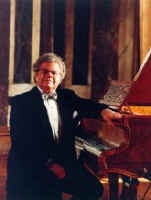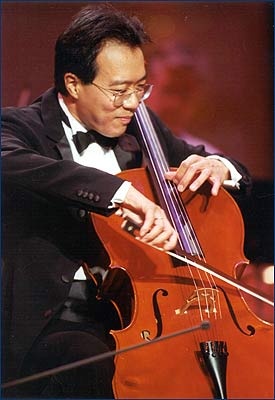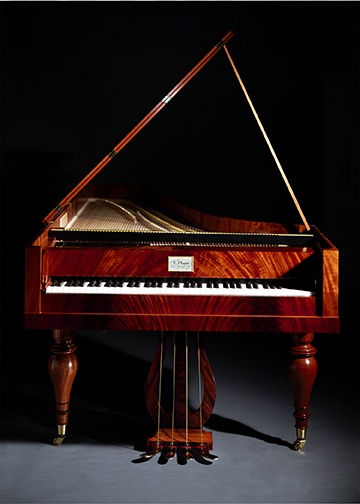Yo-Yo Ma and Emanuel Ax Play Beethoven Sonatas at Tanglewood
Historical Instruments Share the Evening with Modern
By: Michael Miller - Aug 30, 2006
Tanglewood, August 23, 2006 8:30 PM, Seiji Ozawa Hall
Emanuel Ax, piano and fortepiano, Yo-Yo Ma, cello Beethoven, Variations in G on "See the Conquering Hero Comes" from Handel's Judas Maccabaeus, WoO 45; Sonata for Violoncello and Piano No. 2 in G minor, Op. 5, No. 2; Sonata for Violoncello and Piano No. 4 in C Major, Opus 102, No. 1; Sonata for Violoncello and Piano No. 5 in D Major, Op. 102, No. 2
Over the many years of their partnership Yo-Yo Ma and Emanuel Ax have come to do a number of things very well. Among these they play music with absolute dedication and concentration, they educate their audience, and they tell jokes, and all together they do these better than almost anybody. What we should be thankful for is that neither the didacticism nor the humor ever seem to get in the way of the music. When these gentlemen play, they are totally dedicated to it.
In fact, Thursday evening, the didactic component and the music were one. Mr. Ax sat down before the same magnificent R. J. Regier fortepiano that was played so beautifully by Aaron Berkowitz earlier in the summer, when he accompanied baritone Richard Giarusso in Schubert's "Schwanengesang." He announced that Yo-Yo Ma's cello had also been reconfigured like an instrument of Beethoven's time. It was fitted with non-metallic strings and a special bridge, and the supporting pin was removed. Rodney Regier is widely regarded as one of the leading builders of harpsichords and fortepianos. The instrument which has now visited the Berkshires twice is modelled on Viennese fortepianos of the late 1820's, in particular on examples by Conrad Graf and Ignaz Bösendorfer. At this time iron frames began to appear, and this permitted a greater range and volume. This 80-key fortepiano has a rich, full tone throughout its range, recalling more a modern piano than the fortepianos of Mozart's day. At "Schwanengesang," which was held in an intimate, semi-private venue, the audience were able to flock around the fortepiano and examine it, while Mr. Berkowitz and Mr. Regier demonstrated its action and pedals.
It was particularly enlightening to be able to hear the same instrument played by a specialist in early instruments and a recognized master of the modern piano, who has a distinctive style of his own. Mr. Ax was able to import his characteristic sound and technique to the fortepiano with seemingly little effort. In any case the result was as attractive as his work on a modern instrument. Likewise Mr. Ma produced a lovely burnished sound with his historically adjusted cello. It only enhanced his singing tone and lyrical phrasing. From my seat the balance between the instruments was perfect, although I was told that the fortepiano got a bit lost for audience members at the back of the hall in the second balcony. The balance, interaction, and insight of Ma and Ax were so successful in this mode, that I rather regretted their return to modern instruments in the second half. Obviously they found the experiment stimulating. Much more than a scholarly exercise, the use of period instruments was a source of inspiration for them.
With modern instruments the contrasts were more dramatic. The dynamic range was greater, and the range of instrumental colors was different. Of course we were hearing the mature Beethoven of 1815 rather than the young virtuoso of 1796. The slow movements of both the Opus 102 sonatas was deeply affecting, and they brought out to full advantage the many intricacies of the concluding fugue of the second. Apart from historical techniques and interpretation, what really matters is the maturity of their insight into Beethoven's sonatas. Their recording of these works is almost twenty years old, and living with this music over the years as they have has given them an education like no other.
http://homepages.nyu.edu/~mjm11/index.html
michaeljames48@gmail.com




